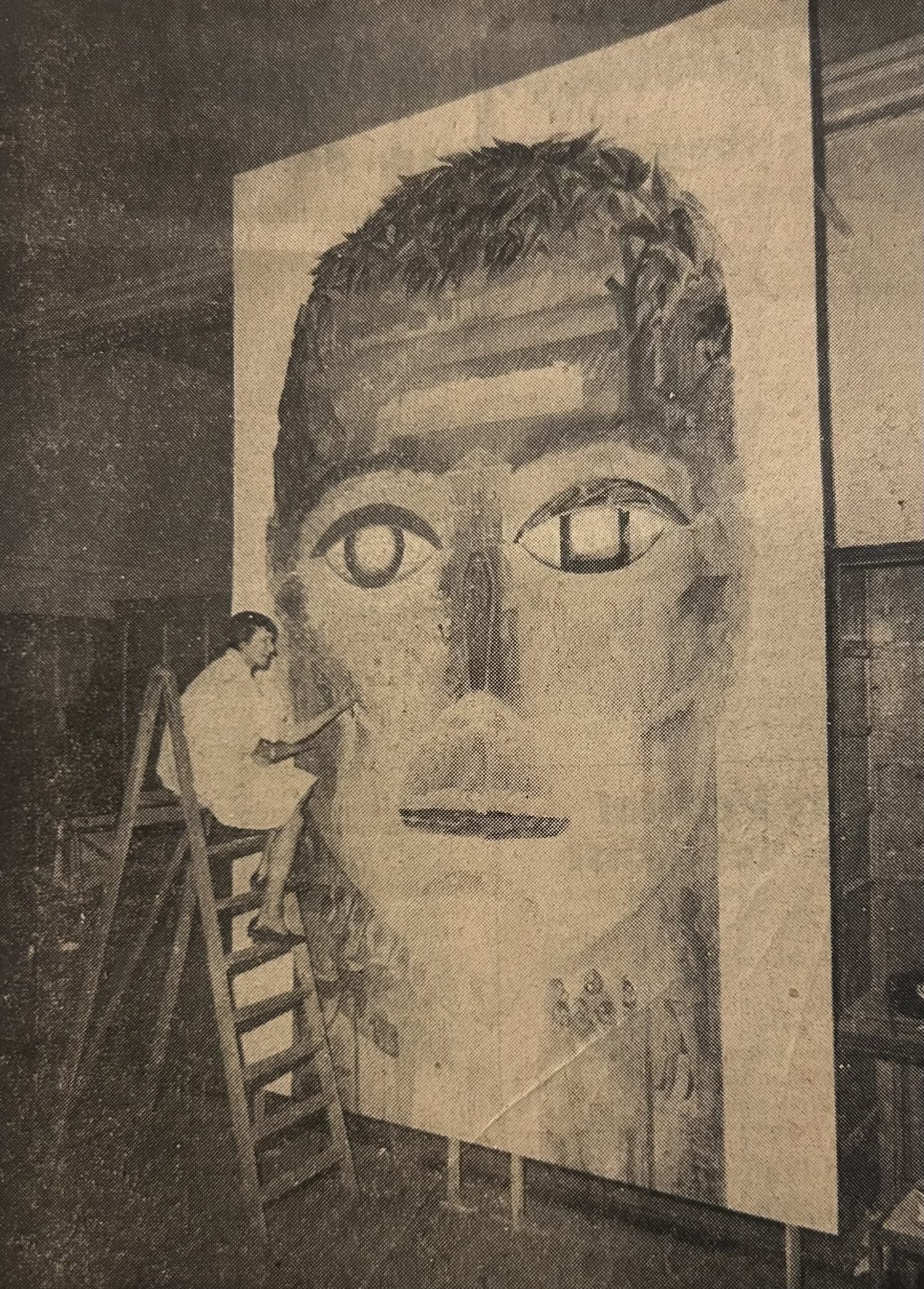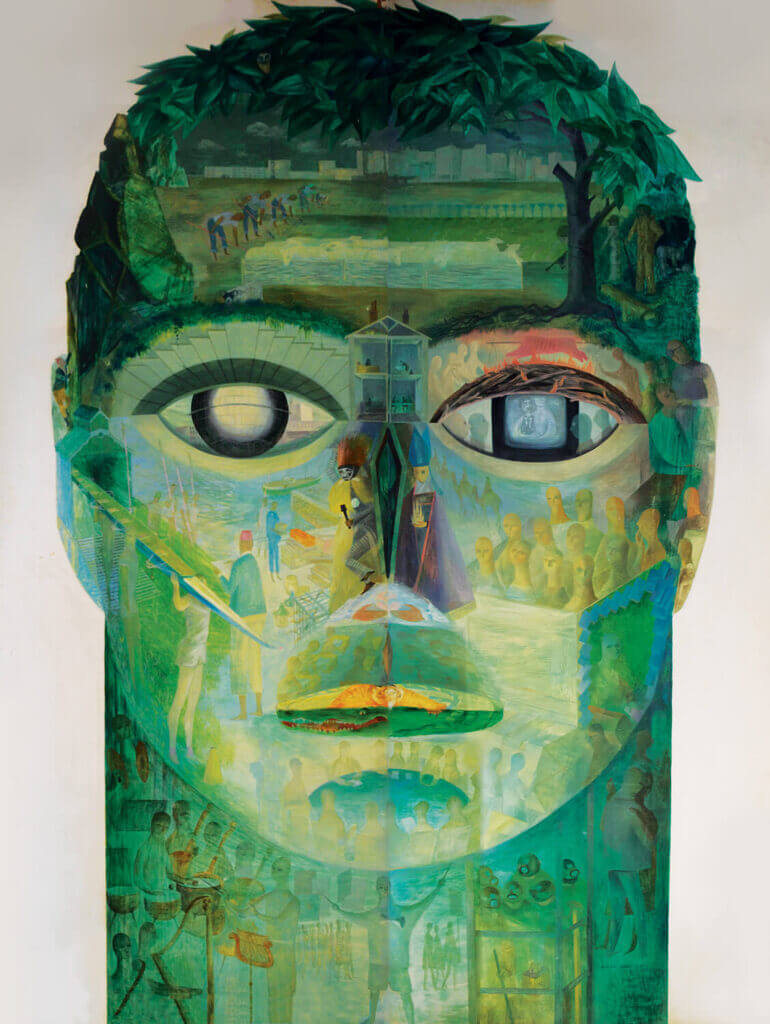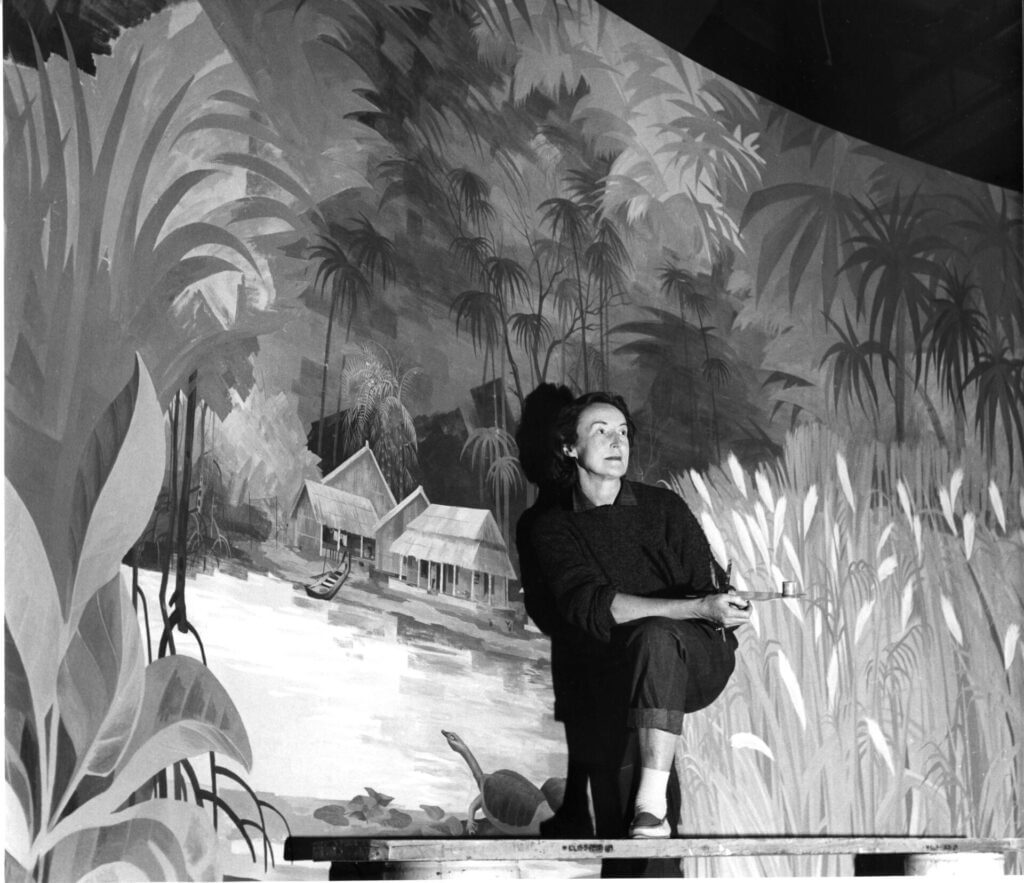Your currently viewing RAW Modern | Switch to RAW Contemporary
Man at Work A Century of Technical and Social Progress, 1961
Catalogue essay by Blanche Llewellyn
Barbara Jones’ training as a mural painter at the Royal College of Art provided her with a sense of freedom and achievement. Transitioning from the small scale of her book illustrations to large-scale canvases spanning many feet in length and height, these expansive surfaces not only accommodated greater physical movement and bold brushstrokes but also liberated her imagination to pursue daring visions.
Jones possessed the competence, charm, and astuteness to attract important commissions and navigate the clients‘ numerous demands. Yet, she always sought opportunities to infuse her murals with her own quirky obsessions.
“Man at Work: A Century of Technical and Social Progress”, was a feature of the international Exhibition of Labour in Turin, which presented ‘a great panorama of industry and labour’. Jones’ mural was presented as a “symbolic of the complexities of the social sciences” by the Central Office of Information of London. The artwork displays figures loosely connected to its theme, such as a board meeting, agricultural scenes, and coal miners. However, these elements are overshadowed by Jones’s preferred subjects: strange and surrealist elements, including a coffin, embracing couples, a television, camels, boats, an orchestra, a skeleton, a tiger atop a crocodile and her beloved owl.
Although Jones never identified herself as a surrealist artist and refrained from aligning with any particular school or group of painters, her work left a significant mark on the movement. Dream-like scenes, unexpected juxtapositions, bizarre assemblages of ordinary objects, visual puns, distorted figures and biomorphic shapes characterize her unique murals.


